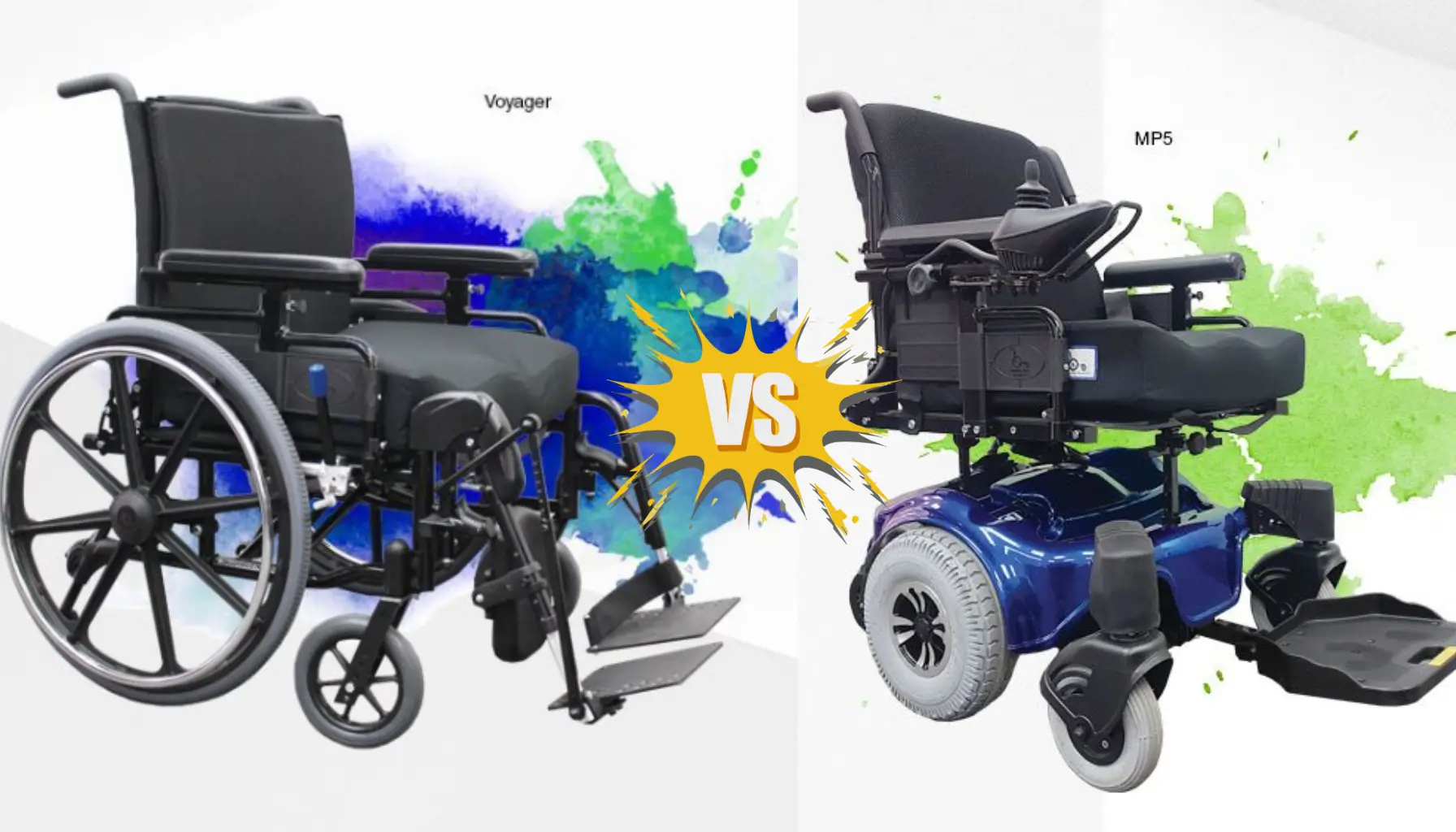
Selecting the right wheelchair is a crucial decision that significantly influences your mobility, independence, and quality of life. Among the primary choices, deciding between a manual wheelchair and a power wheelchair can feel overwhelming. Each option serves distinct needs and lifestyles, making it essential to evaluate various factors before making a choice. In this comprehensive guide, we’ll explore the key differences and considerations to help you choose the wheelchair that aligns perfectly with your requirements. With a clear understanding, you’ll be well-prepared to make an informed decision.
Understanding the Basics: Manual vs. Power Wheelchairs
Manual Wheelchairs: Non-motorized wheelchairs that rely on user or caregiver propulsion. These are lightweight, portable, and budget-friendly, making them ideal for individuals with upper body strength or short-term mobility needs. Shop our manual wheelchairs. Power Wheelchairs: Motorized wheelchairs powered by an electric motor and battery system. These are tailored for individuals who cannot self-propel or need advanced mobility solutions. Features include joystick controls, reclining seats, and excellent maneuverability. Explore power wheelchairs in our shop.
Key Factors to Consider
- Physical Strength and Stamina
- Manual Wheelchairs: Suitable for users with sufficient upper body strength or those with caregiver assistance. Long-term use can lead to fatigue or strain.
- Power Wheelchairs: Best for individuals with limited strength or stamina, such as those with arthritis or muscular dystrophy. These offer effortless mobility and enhanced independence. Find a local dealer to discuss your options.
- Lifestyle and Environment
- Manual Wheelchairs: Ideal for smooth surfaces and indoor use, particularly in compact spaces like homes or offices.
- Power Wheelchairs: Designed for versatile use, from indoor navigation to outdoor terrains, including slopes and uneven surfaces. Their features cater to a dynamic lifestyle.
- Portability and Storage
- Manual Wheelchairs: Lightweight and foldable, making them easy to transport and store.
- Power Wheelchairs: Bulkier and heavier, requiring specialized vehicles for transportation. For frequent travelers, manual wheelchairs are more practical. Contact us to discuss transport solutions for power wheelchairs.
- Cost and Budget Considerations
- Manual Wheelchairs: Starting at a few hundred dollars, they are affordable and require minimal maintenance.
- Power Wheelchairs: Costlier, ranging from a few thousand to tens of thousands of dollars, depending on features. Battery maintenance adds to the expense. Insurance often covers both types. Ensure to check your coverage and financial assistance options. Contact our team for help navigating insurance claims.
- Comfort and Customization Options
- Manual Wheelchairs: Basic comfort with optional upgrades like memory foam cushions and ergonomic backrests.
- Power Wheelchairs: Advanced comfort features, including adjustable seating, lumbar support, and tilt-in-space technology. Customized options can be tailored to specific medical needs. Shop our customized solutions.
- Maintenance and Longevity
- Manual Wheelchairs: Minimal upkeep, including cleaning and tire checks.
- Power Wheelchairs: Require regular maintenance for batteries and electronic components. Repairs may need professional technicians.
- Weight Capacity and Durability
- Manual Wheelchairs: Accommodate up to 300 pounds in standard models; bariatric models handle more.
- Power Wheelchairs: Support users up to 600 pounds or more, depending on the model. Ensure the wheelchair’s capacity matches your needs to prioritize safety and durability.
- User Independence and Caregiver Support
- Manual Wheelchairs: Depend on user propulsion or caregiver assistance.
- Power Wheelchairs: Allow greater independence with intuitive controls. For enhanced autonomy, especially for outdoor or long-distance mobility, power wheelchairs are often the superior choice. Locate a dealer near you.
Deciding between a manual and a power wheelchair is a deeply personal process influenced by your physical abilities, lifestyle, and budget. While manual wheelchairs are cost-effective and portable, power wheelchairs offer advanced features, superior comfort, and enhanced independence. By considering factors such as environment, comfort, and cost, you can make a choice that elevates your quality of life. Need help deciding? Contact us or search for a dealer near you for personalized guidance. The right wheelchair isn’t just a mobility device; it’s a gateway to freedom and empowerment.
To visit our Social Media, please click on Facebook and Instagram


